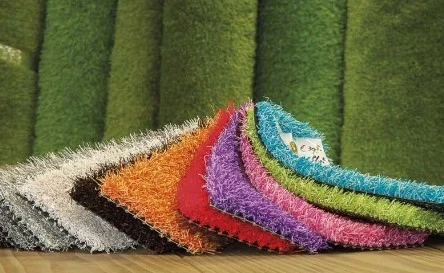Synthetic lawn has become an increasingly popular choice for homeowners and businesses alike, thanks to its low maintenance requirements and evergreen appearance. Unlike natural grass, artificial grass doesn't need mowing, watering, or fertilizing. However, it's not entirely maintenance-free. To keep your synthetic lawn looking its best, regular cleaning and occasional repairs are essential. In this article, we'll delve into some top tips for maintaining artificial grass, ensuring it stays lush and beautiful year-round. Read on to discover how you can enjoy the benefits of a pristine synthetic lawn.
Cleaning Your Synthetic Lawn
Regular Brushing
Just like natural grass, artificial grass can accumulate debris, leaves, and dirt over time. To prevent these unwanted elements from settling in, a regular brushing routine is crucial. Use a stiff-bristle broom or a power brush to sweep the surface of your synthetic lawn. This not only removes surface debris but also helps the fibers stand upright, maintaining that fresh, natural look. Aim to brush your lawn at least once a week, or more frequently if you have trees or shrubs nearby.
Leaf Blowers
For larger areas or to remove leaves quickly, a leaf blower can be your best friend. A quick pass with the blower can clear away leaves, dust, and other light debris effortlessly. Just be sure to set it on a low setting to avoid damaging the grass fibers. Leaf blowers are especially useful during the fall season when leaves tend to accumulate.
Rinsing with Water
Sometimes, a simple rinse with water can do wonders to refresh your synthetic lawn. Use a garden hose with a gentle spray nozzle to wash away dirt and dust. Be cautious not to use high-pressure settings or hot water, as these can damage the grass. A light rinse every few weeks should suffice to keep your lawn looking clean and vibrant.
Removing Stains
Accidents happen, and stains can occur on synthetic lawns. Whether it's from pet urine, spilled drinks, or other substances, addressing stains promptly is essential. To remove stains, mix a solution of mild detergent and warm water. Gently scrub the stained area with a soft-bristle brush or a cloth, then rinse thoroughly with water. For tough stains, you can also use a mixture of equal parts water and white vinegar. Just remember to rinse thoroughly afterward to remove any vinegar smell.
Weed Control
One of the benefits of synthetic lawns is that they are weed-resistant. However, occasionally, weeds may still find their way through the base layer. To tackle this issue, use a weed killer that is safe for artificial grass. Be sure to follow the manufacturer's instructions carefully to avoid damaging your lawn. Regularly inspect your lawn for any signs of weed growth and address them promptly.
Repairing Your Synthetic Lawn
Fixing Tears and Rips
Over time, small tears or rips may develop in your synthetic lawn, especially in high-traffic areas. To repair these imperfections, follow these steps:
Clean the damaged area by removing any debris or loose fibers. Apply adhesive specifically designed for artificial grass to the tear or rip. Press the edges of the damaged area together and hold them in place until the adhesive sets. Allow the adhesive to dry completely before using the lawn again.Replacing Damaged Sections
If a particular area of your synthetic lawn is beyond repair, you can replace that section. Here's how:
Cut out the damaged portion carefully using a utility knife. Measure the dimensions of the removed section. Purchase a replacement piece of artificial grass that matches the style and color of your existing lawn. Lay down the new piece, ensuring it fits snugly into the empty space. Secure the edges with adhesive and allow it to dry thoroughly.Addressing Burn Marks
Artificial grass can be vulnerable to heat damage from sources such as hot objects, cigarettes, or fireworks. If you notice burn marks on your synthetic lawn, here's how to address them:
Trim away the burnt fibers, making sure to remove all the damaged material. Use a replacement patch of artificial grass to fill in the area. Apply adhesive around the edges of the patch and press it into place. Allow the adhesive to dry completely.
Properly Maintaining Edges
The edges of your synthetic lawn can be vulnerable to damage if not properly secured. To ensure they stay in good condition, use lawn edging or landscape border material to hold the edges firmly in place. This will prevent them from fraying or becoming uneven.
Maintaining your Top-quality Synthetic lawn doesn't have to be a daunting task. With the right cleaning routine and some basic repair skills, you can keep your artificial grass looking lush and vibrant for years to come. Remember to brush it regularly, rinse away dirt and stains, and address any damage promptly. By following these tips and staying proactive in your maintenance efforts, you'll continue to enjoy the many benefits of a beautiful synthetic lawn. So, continue reading and take pride in your perfectly manicured synthetic lawn.


